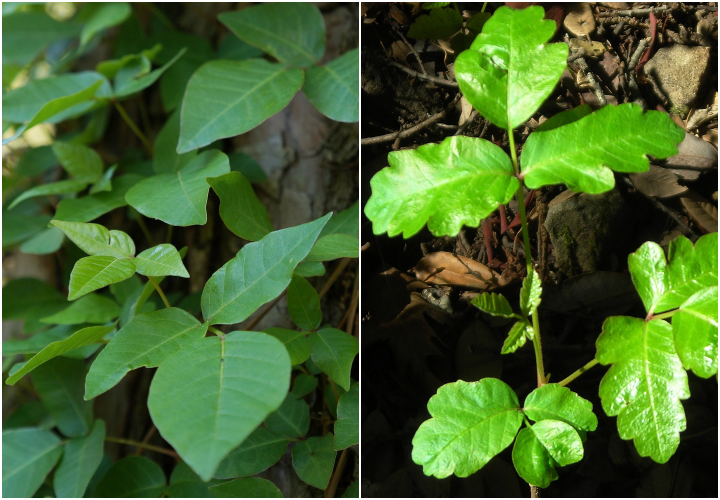“Leaves of three, let it be!” “Hairy vine, no friend of mine!” Learn how to spot poison oak, tell the difference between poison oak and poison ivy, and treat a poison oak rash.
WHAT IS THE DIFFERENCE BETWEEN POISON OAK AND POISON IVY?
Poison oak is a relative of poison ivy. There are many similarities:
- Both plants contain the same toxic resin, urushiol in all parts of the plant (toxic to humans but harmless to animals).
- Both plants have three leaflets, white flowers in spring, and can grow as a vine or a shrub.
- Leaflets can range in size from the length of your thumb to the length of your hand.
- Middle leaflet has a notably longer stem than the two side leaflets, though more obvious in poison ivy than poison oak.
- Depending on the season, leaf color can range from green to orange and even a dark purplish-red.
But they are indeed different plants. In North America, there are two species of poison oak: Atlantic (Eastern) and Pacific (Western).

Poison ivy (left) vs. poison oak (right)
HOW TO IDENTIFY POISON OAK
- Poison oak is a low-growing, upright shrub. It can grow to be about 3 feet tall, sometimes giving it the appearance of a vine.
- Leaf shape resembles an oak leaf (hence the name, poison oak), but it’s not a member of the oak family.
- Leaflets are duller green than poison ivy and usually more distinctly lobed or toothed.
- Leaflets have hairs on both sides, unlike poison ivy.
- Poison oak tends to grow at elevations between sea level and 5,000 feet.
- While the fruit of poison ivy is the color of pearls, poison oak fruit (called “drupes”) has a tan color.
At the end of the day, just remember: Leaves of three, let it be. In other words, if you see a plant with clusters of three leaves, don’t touch it!
Credit to: https://www.almanac.com/


